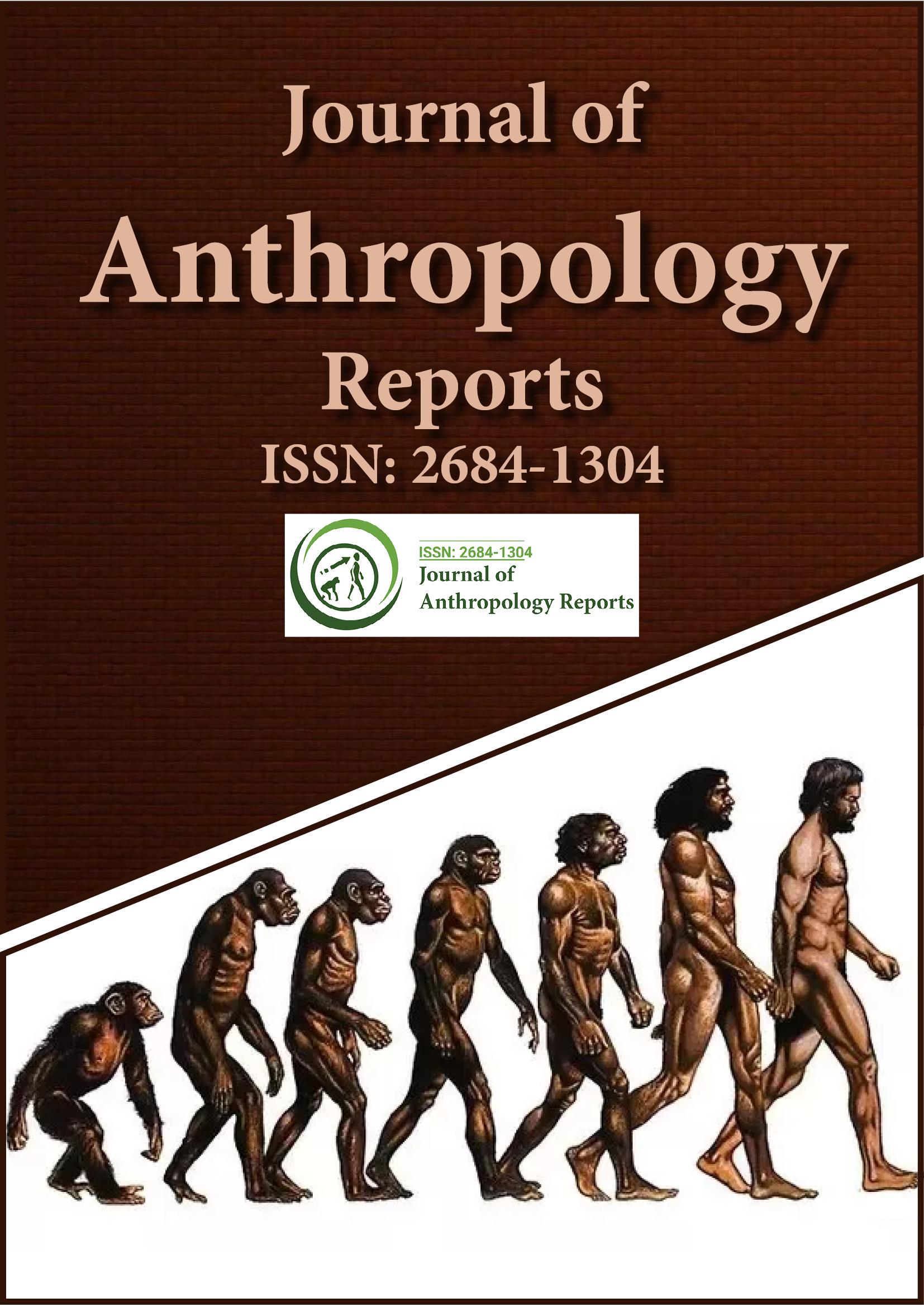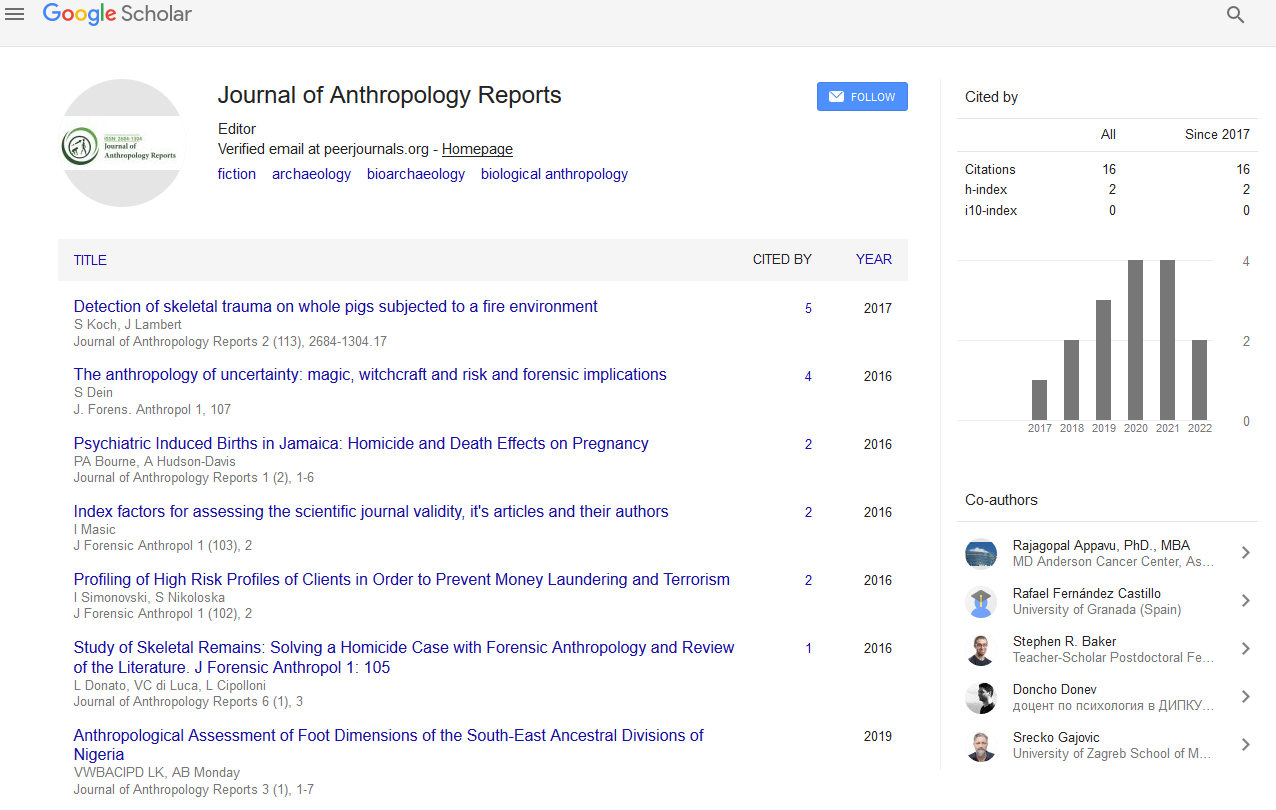Indexed In
- RefSeek
- Hamdard University
- EBSCO A-Z
Useful Links
Share This Page
Journal Flyer

Open Access Journals
- Agri and Aquaculture
- Biochemistry
- Bioinformatics & Systems Biology
- Business & Management
- Chemistry
- Clinical Sciences
- Engineering
- Food & Nutrition
- General Science
- Genetics & Molecular Biology
- Immunology & Microbiology
- Medical Sciences
- Neuroscience & Psychology
- Nursing & Health Care
- Pharmaceutical Sciences
Perspective - (2022) Volume 5, Issue 4
The Role of Forensic Archaeologists in Criminal Case Investigation and Evidence Recovery
Argincavin Regi*Received: 13-Jun-2022, Manuscript No. JFA-22-17387; Editor assigned: 15-Jun-2022, Pre QC No. JFA-22-17387(PQ); Reviewed: 29-Jun-2022, QC No. JFA-22-17387; Revised: 06-Jul-2022, Manuscript No. JFA-22-17387(R); Published: 13-Jul-2022, DOI: 10.35248/2684-1304.22.5.135
Description
When reconstructing the past from findings and features in the material record or from excavations, archaeologists apply analytical reasoning. They use the effects of earlier human activity as a starting point for their reasoning. For use to remove unrelated objects and excavate and retrieve human remains, personal belongings, weapons forensic archaeologists are used. When recovering artefacts from the past, traditional archaeologists follow a procedure that is quite similar to archaeology. When excavating a covert burial as part of a criminal inquiry, a forensic archaeologist serves as both an outside expert and a crime scene investigator. It can be applied to many different types of cases, including murders, suicides, suspicious deaths, missing people, buried remains, scatter depositions, tragic fires, exhumations, cold case reviews and overseas deployments. Understanding the interaction between the grave and other buried features can help us determine how quickly people decompose in various conditions or what happens to them when they are burned. By supplying intelligence for certain search and excavation regions or on the other hand by excluding other locations, it can help with the creation of forensic and search methods and help to reduce search criteria.
Burial grounds and graves police frequently hire forensic archaeologists to assist with locating and excavating graves and cemetery sites as well as identifying evidence connected to crimes and retracing the sequence of events that occurred before the victim's burial. They mostly look into unsolved crimes, missing persons' cases, and information regarding unearthed graves and grave sites. Crime-related items both the personal effects of a crime victim and those buried by the offender to conceal their involvement in the crime might be included in this category. They could involve tools, weapons and variety of personal items.
Disposal of human remains on the surface when human remains are dumped on the surface, forensic archaeologists are frequently enlisted to assist in the evidence collection process. These include covering the body with trash, building debris, tree benches forensic archaeologists excavate sites in order to find evidence and eliminate items unrelated to the crime or the victim. Forensic entomologists and forensic botanists frequently collaborate with forensic archaeologists when looking at surface body disposals. Mass graves these are typically inquiry focuses on both locating human remains for identification and gathering proof of war crimes.
Hidden evidence that is pertinent to civil trials sometimes forensic archaeologists can search for buried evidence associated with crimes like murder without having to dig up human remains. They are occasionally used to aid in the search for buried fence lines and other pertinent evidence in civil trials. Their justification begins with the effects of earlier human activities. Forensic archaeologists are utilised to remove unrelated items, excavate, and extract items like as firearms, personal effects, and human remains. Their justification begins with the effects of earlier human activities. The process traditional archaeologists use to recover historical artefacts is very similar to this one. They mostly look into unsolved crimes, missing person’s cases, and information regarding unearthed graves and grave sites.
In addition to assisting with the discovery and excavation of human remains and the identification of objects pertinent to case forensic archaeologists also assist in the reconstruction of crime scenes and the dating of crime scene just like traditional archaeologists do when unearthing the artefacts of ancient civilizations.
Citation: Regi A (2022) The Role of Forensic Archaeologists in Criminal Case Investigation and Evidence Recovery. J Anthropology Rep. 5:135.
Copyright: © 2022 Regi A. This is an open access article distributed under the terms of the Creative Commons Attribution License, which permits unrestricted use, distribution, and reproduction in any medium, provided the original author and source are credited.

